BAZBALL England’s new brand of cricket, ready for the Ashes
 BY RISHI PERSAD
BY RISHI PERSAD
LOW LIFE
Three times unlucky Down Under
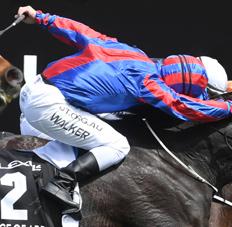
BODY OF WORK To build, and rebuild a champion
BY MATT LITTLE
IT IS 29 APRIL 200 7, and it has been a remarkable season for Arsenal women’s team. Having already secured the Premier League, FA Cup and League Cup treble, they face the Swedish Champions, FC Umea, for a shot at an unprecedented quadruple.
They emerge at Meadow Park – a home they share with non-league side Borehamwood FC – to a modest crowd of 3,467. It is a night that will go down in history as they clinch the trophy following a nervy stalemate, preserving their narrow first leg lead. They have a combination of goalkeeping brilliance and the woodwork to thank. Captain Faye White joins her teammates to lift the trophy – a moment
she will never forget.
Exactly 16 years later, Arsenal women’s face off against FC Wolfsburg for a place in the Champions League final. The streets around the Emirates Stadium are gridlocked. Captain Leah Williamson pulls pints for her adoring fans at the Tollington. It is a carnival atmosphere.
White is present that night as part of a record 60,338 capacity crowd to cheer on the team she now supports, and to see the unveiling of a mural that honours that night in 2007. She confesses she is “surprised at how the game has exploded”, adding: “When I retired, I thought it was going to be another 20-30 years before we got full stadiums. I’m very proud of my
career, but I would love to be playing now. But I just missed out and that’s life.”
Long before the days of sell-out crowds and pre-match pints, White was at times a one-woman force, seeking to open doors for girls who wanted to play football. “It was hard work,” she says. “I gave up so much of my life to do it. But I just loved it. It fills me with pride to know that, even though it wasn’t given on a plate, we wanted to leave
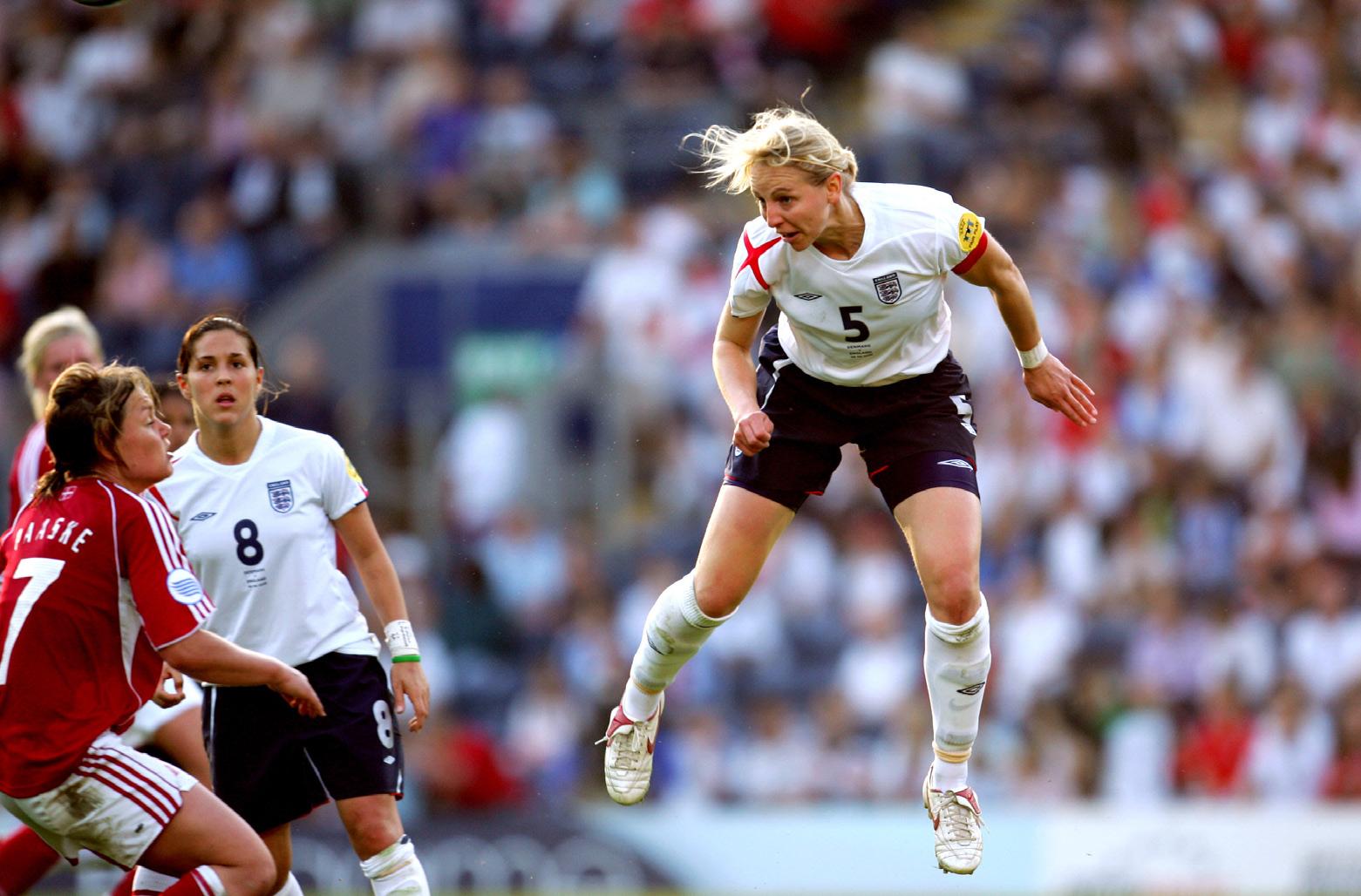 BY SARAH KATE BYRNE
BY SARAH KATE BYRNE
the game in a better place. We were England players and we had to fight to raise the standards.”
It is natural to wonder if White, who retired in 2013, feels any hint of jealousy at the boom in popularity in the women’s game since it became professional in 2018.

“People kept saying to me, ‘Oh, do you want England to do well, because that could overshadow your achievement?’ I was like, ‘Of course I do!’ I want the game to improve, I want to see England as the best team, because the bigger the game grows the bigger the opportunities for everyone – for former and future players.”
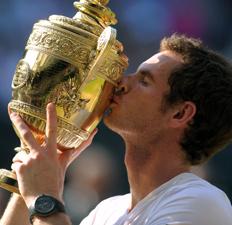
She was in attendance on a joyous evening at Wembley last summer when →
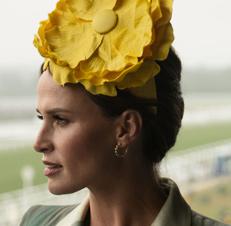
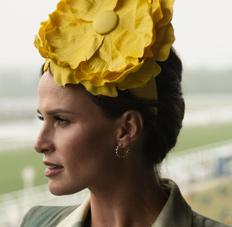 CHARLIE FELLOWES
CHARLIE FELLOWES
HEAD START How to shine at Royal Ascot
Women’s football in England is now professional and thriving – thanks to pioneers such as former Arsenal and England captain Faye White , who reflects and looks ahead with Lola Katz Roberts
THE WORLD’S FINEST BOOKMAKER: TAKING BETS SINCE 1882 • FITZDARES.COM • EIGHTEENTH EDITION, SUMMER 2023 • NO UNDER 21 s
‘It was hard work. But I just loved it. We were England players and we had to fight to raise the standards.’
→ the Lionesses ended the nation’s 56-year wait for major tournament success, having herself come close to ending the drought after just falling short in the 2009 Euro final in Helsinki.
“It felt like just as much a win for all the girls that had come before as for that group. I was watching them thinking they have just realised my dream for me. It justified everything. I was crying, my son was saying to me ‘Mummy you’re supposed to be happy!’ It was just so emotional.”
“In 2009 we all felt we’d made a massive step. On the way back, Hope [Powell, England’s coach] said to us there would be some press waiting for us. But when we walked through arrivals, no one was there. I remember seeing the pictures of the Germans coming back, and they had over 250,000 people in the streets celebrating. And I just felt, even though we didn’t win, why can’t we have that?
SPECULATE TO ACCUMU L A TE
Back short-priced favourites or aim for a big return with our 2023 accumulators
LOW BALL 10/1
Djokovic to win Wimbledon Men’s England to win The Ashes
USA to win the Ryder Cup
Verstappen to win the Silverstone GP
HIGH BALL 650/1
Swiatek to win Wimbledon Ladies’ McIlroy to win The Open

France to win the Rugby World Cup India to win the Cricket World Cup
If there is any residual frustration around her career, it seems solely directed towards a media at the time, who she felt constantly overlooked her and her teammates’ achievements and weren’t interested in promoting the sport.
“During the Euros [last year], people were talking about how much the women’s game had improved as if to justify people’s interest. Of course it’s better now… because it’s professional. For example, Jill Scott will be that split second quicker because she’s training every day. The improvement on the pitch has gone up 5-10 per cent, but off the field everything has improved 100 per cent.
“We never do that about the men’s game. Surely Harry Kane is so much better and fitter and stronger than Jimmy Greaves was, but you don’t dismiss the World Cupwinning team in 1966. In women’s football there just isn’t that respect for the past.”
There is, however, a flash of competitiveness when she compares the Lionesses’ 2009 vintage to last year’s Euro-winning crop. “You do wonder what would happen if our team from 2009 played the current Lionesses. I think we would be on a par, even though we weren’t professional. Some of the players we had and what we achieved… if we were professional, you think, ‘What could our ceiling have been?’”
One of the names she cites is the legendary Kelly Smith. “Kelly was just unbelievable. Through my time she was the best. But even if she played now, she’d be the best player in England – no contest.”

TALK NATURALLY DRIFTS on to the upcoming World Cup, which kicks off on 20 July in Australia and New Zealand, with the Lionesses getting under way against Haiti two days later. England are missing key figures, with Leah Williamson and Beth Mead sidelined, while senior players Lucy Bronze and Millie Bright will still be working their way back to full fitness after recently recovering from injuries.

“A few months ago, if you’d asked me who would win the World Cup, I would’ve said England. I was that confident they could do it. I think Leah and Beth are huge losses. Equally, when you have big players out, the rest of the team step in and say, ‘I’m going to fill that role.’ But you’ve got to believe. You’ve got to have hope. The mindset that’s
instilled over the last few years means they’re still set up to do well.”
It’s anyone’s guess who will go on to write a chapter in the ever-expanding history book of women’s football. What is for sure, though, is that the game we enjoy today would not be possible without the unwavering efforts of Faye White and her teammates. “We just kept banging on the door,” she says. At last, it seems, that door is finally open.
OUR TRIBUTE TO THE BEST BETS & WINNERS
SATURDAY 14 JANUARY
INVESTED £50 HEINZ
SELECTION Haddex Des Obeaux @ 11/8
13:15 Warwick WON
Gailia Des Liteaux @ 3/1
13:50 Warwick WON Angels Breath @ 11/2
14:05 Kempton PU Grey Dawning @ 4/1
14:25 Warwick WON Iwilldoit @ 10/1
15:00 Warwick WON
Glimpse Of Gala @ 2/1
15:35 Warwick WON
RETURNED £241,681
TUESDAY 28 FEBRUARY
INVESTED £100
SELECTION Brighton 1-0 @ 4/1 vs Stoke Derby 2-0 @ 5/1 vs Cheltenham Man City 3-0 @ 11/2 vs Bristol City
RETURNED £19,400
SATURDAY 11 MARCH
INVESTED £100 E/W TRIXIE
SELECTION Just A Spark @ 4/1
12:55 Wolverhampton WON Crambo @ 13/2
13:50 Sandown WON Iceo @ 5/1
14:25 Sandown WON
RETURNED £40,060
SATURDAY 11 MARCH
INVESTED £35 TRIXIE
SELECTION Berkshire Shadow @ 4/1
14:40 Wolverhampton WON
Duke Of Oxford @ 17/2
18:00 Chelmsford WON
Taskheer @ 13/2
20:30 Chelmsford WON
RETURNED £17,937
Congratulations on some fantastic picks, you all know who you are.
FRIDAY 24 MARCH
INVESTED £95.23 TRIXIE
SELECTION The Carpenter @ 11/10
13:30 Newbury – WON Russian Ruler @ 7/2
14:40 Newbury – WON On The Blind Side @ 28/1
15:10 Newbury – WON RETURNED £50,225
SUNDAY 9 APRIL
INVESTED £5,000
SELECTION Jon Rahm @ 9/1 The Masters RETURNED £50,000
FRIDAY 14 APRIL INVESTED £2,000
SELECTION Bill Baxter @ 20/1
16:05 Aintree RETURNED £42,000
SATURDAY 15 APRIL
INVESTED £100 E/W SUPER YANKEE
SELECTION West Balboa @ 5/1
14:25 Aintree WON Kateira @ 12/1
15:00 Aintree 2ND
Flooring Porter @ 9/2
15:35 Aintree 3RD
Bowtogreatness @ 12/1
16:15 Aintree 2ND
Gaillard Du Mesnil @ 10/1
17:15 Aintree 3RD RETURNED £65,902
FRIDAY 19 MAY
INVESTED £50 E/W
SELECTION Zoulu Chief @ 150/1
14:40 Newbury RETURNED £9,100
SUNDAY 4 JUNE
INVESTED £250 EW
SELECTION Tom McKibbin @ 100/1
Porsche European Masters RETURNED £30,500
02
Chloe Kelly in action for the Lionesses at last summer’s Euros
EDITED, DESIGNED AND PRODUCED BY FITZDARES LTD © FITZDARES 2023
‘It felt like just as much a win for all the girls that had come before as for that group.’ been
n
Lola Katz Roberts is Assistant Editor of the Fitzdares Times.











Weatherbys Private Bank is a trading name of Weatherbys Bank Ltd and is authorised and regulated by the Prudential Regulation Authority, and regulated by the Financial Conduct Authority. Financial Services Register number: 204571. Weatherbys Bank Ltd is registered at Sanders Road Wellingborough Northamptonshire NN8 4BX. Registered number: 2943300. Spend more time doing the things you love when you are with Weatherbys
We take the stress out of banking, leaving you more time to enjoy life
Jonason
“
Tom
Private Banker
SPEAKER’S CORNER William Woodhams
HUG A BOOKIE
ONE OF THE BROKERS SHOUTED from his desk to my office: “Will, I have Radio 4 on the line.” Oh crumbs, I thought, this is no time to close the door and hide under the desk – which I have done a few times during Cheltenham.

It all started with an innocuous tweet.
I had copied a page of the government’s white paper on gambling – having speed-read it – and wrote: “In the 268 pages of the White paper, I'm pleased they squeezed in 1 page on the benefits of gambling – 1) £2bn in tax 2) added £6bn to economy 3) 100k jobs 4) No betting, no proper racing 5) IT’S BLOODY FUN FOR THE VAST MAJORITY OF ADULTS. ”
Sometimes you can write brilliant, pithy comments on Twitter and not a soul will notice. Other times, you write something chippy and worthless, and it gets what you call ‘traction’. Soon the tweet had been retweeted 35 times – which is a lot for me. I was duly summoned to the BBC and spoke live on BBC Radio 4’s PM with Evan Davis. I’m told there are a couple of million listeners. Of course, the programme started with a lady who had been financially crippled by gambling addiction. It was another sad story that gave a very graphic depiction of problem gambling in the UK.
After getting over some nerves, I made my case. The industry has been turbocharged by technology and has been rather slapdash in their duty of care. However, a combined effort had now made us pretty good at protecting the 1 per cent – those who have the propensity to be addicted to gambling.
Many of you reading this will know the tough measures we have put in place to make sure you can afford your gambling passions. The libertarians among you may have decided not to share personal financial details. Others I know have decided to take their business to Montenegro and Panama. Each to their own, I suppose. For me, the worry is the reputational damage and knock-on effect this has on UK racing. Later that week, I spoke on the brilliant Nick Luck on Sunday
I suggested racing needs to “Hug a bookie”, which got a laugh from the TV panel, exemplifying the challenge racing in the UK has. There are many involved who don’t really understand how the sport is funded.

Let me make this crystal clear: apart from the shaking-down of a few sheikhs over the years, it’s bookies that pay for the sport, or more precisely, punters. Fitzdares have members who contribute more to the levy in one afternoon than most of us spend on racing attendance, ownership and everything in-between, in a whole year.
THE SNOBBERY TOWARDS BOOKMAKING has to stop now. Bookmakers are no longer fast-talking spivs. They are either small ‘service driven’ independents or massive conglomerates. There is little in-between. And surely there should be some pride that we in Britain are worldclass at bookmaking. Bet365 is Europe’s biggest and richest tech company. It has done more to close the gender pay gap than anyone out there. And it pays more tax in the UK than Google, Meta and all the world’s tech companies combined.
But where does this snobbery come from? I have a controversial view. It’s a class thing. The posh have always loved racing and a punt, the working class even more so. It’s the middle class, the professional class, that have been sniffy about it – and shamefully I have to admit I’m pretty middle-class myself!
So, I ask politely, as the industry has its knuckles wrapped and the government takes its pound of flesh, that we all accept and promote bookmaking. Not as a necessary evil, but for the bloody fun that it is. And fun that occasionally buys you a car. Betting, as our chairman always says, is the chilli flakes on your eggs. And God damn it, we all need a bit of spice in our lives. n
William Woodhams is CEO of Fitzdares and tweets from @WIGWOOD (in case you want to see what all the fuss is about).
04
Apart from the shaking-down of a few sheikhs over the years, it’s bookies that pay for the sport, or more specifically, punters.
TOPFOTO.CO.UK






GEORDIE SCORE
CHRIS DOBEY ’S FORTUNES AT THE OCHE ARE MIRRORING THOSE OF HIS BELOVED NEWCASTLE UNITED, HE TELLS HENRY BEESLEY
‘IROCKED UP ONE NIGHT IN A PEAKED CAP , shorts and flipflops and my mate just turned to me and said, ‘What are you, some kind of Hollywood superstar?’” While Chris Dobey may not have been a movie star at the time, the name stuck. And now his story is beginning to live up to the billing. It’s been a whirlwind year for the Geordie darts star, coming from nowhere to rocket to the top of the sport.
You’d have been more likely to find Chris – a lifelong Newcastle United fan – playing Sunday league football than throwing arrows when he was growing up. However, one evening he found himself making up the numbers at the oche in his local boozer. “I was in the pub with a mate of mine who fancied himself as a bit of darts player,” he says. “One of the lads was missing from the group who normally played, so I decided to fill in for them. Straight away, I really took to it.”
After spending some time cutting his teeth on the social circuit, he began to realise this could become more than just a hobby. “I’d won virtually every big tournament in the North East in 2015, so I had ambitions of going to Q-school. There I had a chance to win a two-year exemption on the PDC circuit.

After I got through that, I picked up my tour card at the first time of asking. That’s something I am particularly proud of.”
Having only taken up darts in 2010, Chris had made it to the PDC Tour within just five years – an astonishing feat. He then made a splash when reaching the quarter-finals at the
UK Open in 2016 – his first major TV tournament – before continuing to progress through the professional ranks.
Earning your seat at the table is the easy bit; the real challenge is staying there. Throughout his career, he has earned a reputation for finding himself on the wrong end of a tough draw, often bumping into players who have produced their very best darts on the day. “It’s incredibly hard when you’re playing well but feel as though you’re not really getting anything for it,” he says. “Fortunately, I’m not really someone that gets too down on myself. I’m always able to take the positives. I know that it’s going to take a good game to beat me these days, which gives me a lot of confidence.”
Nathan [Aspinall], Joe Cullen, Jonny Clayton and Michael Smith are some of my best pals on the tour.”
“When practising, I’ll always listen to a bit of music. Between matches, for me it’s a case of trying to chill out. I take myself away from the intense pressure cooker on stage so that when the time comes to play, I’m ready and focused on the battle ahead.” The past couple of seasons have seen Chris take his game to the next level. He signed off 2022 by reaching the quarter-finals of the World Championships at Alexandra Palace. This year kicked off with the PDC Masters in Milton Keynes, and changed everything for Chris. Despite most bookmakers pricing him up as the rank outsider of the field at 100/1, he felt like that wasn’t a fair reflection of his chances. “The Masters seemed like a good opportunity to put a nice little run together. Going into it, my game felt great. I’d just registered, by far, my best ever performance at the Worlds and was playing some consistently good stuff.”
As for life on the road, he acknowledges the vast number of sacrifices that need to be made, notably having to spend time away from his family for long periods of time. “Of course, it’s hard to be away from my little lad, but I’m doing what I love to earn a good living. I’m confident he’ll understand in the long run. All the lads are great as well. We always have a good laugh away from darts too, so it’s nice and relaxed.
In trademark fashion, he was handed a tough draw in round one, against Joe Cullen. He needed something special to get the upper hand, and at the perfect time he delivered a moment of magic that he’d so often been on the receiving end of in recent years. “I broke him at 4-4 by pinning a 125 finish on the bullseye. That was one of those game-changing moments where I thought to myself: could this be my time?”
Chris then edged out Luke Humphries to earn a quarter-
6
‘That was one of those game-changing moments where I thought to myself: could this be my time?’
final spot against Dirk van Duijvenbode. An accomplished performance set up a spine-tingling semi-final clash with Michael Smith, the world number one and reigning world champion. “It’s always tough playing against a good friend like Michael, but I felt I handled that side of things really well. I managed to get my head in front and stayed there to progress, despite some slightly shaking doubling at the end!”
AFTER BOOKING HIS PLACE in his maiden major final, how were the nerves? “It all seemed to happen so quickly. I only had about an hour between the semis and the final which really helped me. I didn’t have too much time to sit around thinking about the final.”
Former world champion Rob Cross was waiting.
“The final couldn’t really have gone any smoother. It went exactly to the script. I wouldn’t say it really surprised me as I’ve always felt I can beat anybody, but I was a little shocked at how I was consistently outscoring Rob. I got a little edgy trying to finish the job that day – I was missing by a fair way in the closing stages. Ultimately it was just a relief to finally get over the line and get my hands on a big title.”


While it’s not ‘win and you’re in’ regarding a place in the Premier League, it was widely regarded that the Masters champ would fill one of the remaining spots. “You always want to play with the best players in the world and the Premier League is the place to do that. I was at home the day after the final when my agent called me and said, ‘Do they fly direct from Newcastle to Belfast?’ I replied saying that I’d had



a look and they did. He just said to me, ‘Well, you can get one of those booked now, Chris – you’re in the Premier League!’ That was obviously a huge moment for me.”
In a thrilling Premier League campaign, the night on his home turf was Chris’s high point. “Hosting in Newcastle was obviously unreal. I managed to beat Michael [Smith] in front of all my family and friends. That was a really special experience and I guess it was all made possible thanks to that magical weekend at the Masters. I’ve learned so much from the experience. I know I can mix it with the best players in the world. This year it was all new and I wanted to really enjoy it. I’ll be much better prepared the next time it comes around.”
What’s next for Chris? “There’s still a lot of 2023 left and I definitely want to get another couple of titles under my belt – hopefully another major! That should set me up nicely heading into the World Championships.”
Away from the oche, Chris’ priorities are a little closer to home. “Whenever I’m not playing darts, I’ll be home or away following Newcastle. It’s been an unbelievable season for the lads and watching them in the Champions League next year will be incredible. I just hope it doesn’t clash with the darts. Hopefully, I’ll be able to combine an away day with a European darts event. That would be ideal.”
Chris Dobey to win the 2024 PDC World Championship and Newcastle to be the 2023/24 European champions? There’s a double we can get behind. n

Chris Dobey is a Major champion sponsored by Fitzdares.

07
Every morning I’m up at half past four. Depending on the rides I’ve got, I might put a few extra layers on to shed some pounds. I always weigh myself before bed, so I have a good idea of where I’m at. After I’ve ridden out – usually now for my owner, Sheikh Fahad – I’ll head off to Ascot. Traffic is a factor at the Royal Meeting, so I’ll always set off a bit early, especially if I want some time to study the form, read the paper and walk the course.
Your diet on the day entirely depends on how much weight you’re carrying. Sometimes at Ascot there’s a lot of light weights in the handicaps so you can’t take on anything. Normally, I’ll get up and have some water, fruit and Greek yoghurt before heading to the gym. After a workout, I’ll probably have some scrambled eggs or beans on toast with a pint of milk before heading to the track. A lot of the time, I’ll just nibble away throughout the day.
On a day-to-day basis, I’ve got a ‘form guide’, a guy called Charlie Richards who works at Andrew Balding’s yard, as well as my agent Chris Dixon, who works at Racing TV and knows the form inside out. Obviously, there’s also my father, who helps a bit, too. He’s not quite my coach but he does text me little bits of information every now and then – just a bit of this and that to help me each day. At Royal Ascot, however, you kind of know all the horses and how they’re going to be ridden anyway.

Then you’ve also got to consider what the owners and trainers have to say too. Most owners tend not to give too many instructions, but sometimes they do. It’s a case of balancing all the opinions out and then riding with your best instincts. For me, while it’s a massive event, the actual riding at Royal Ascot feels like just another day at the office. Having said that, the atmosphere in the weighing room is a little different. There’s a real buzz around the place.
ROYAL ASCOT DIARY
by Cieren Fallon
When we were discussing what to do with Oxted in 2021’s King’s Stand Stakes, we decided that plan A would be to settle in behind Battaash, up with the pace. However, as soon as the gates opened, we moved swiftly to plan B. They all flew off at a ferocious speed and we were left behind in the early stages.
My instant thoughts were to take my time, get into a nice rhythm and get him relaxed. Before I knew it, we were getting up to the threefurlong pole. At that point, you’ve got to make a move. I looked up in front of me to see who would take me into the race the furthest. The whole field then started to shift left, and gaps would be scarce. I switched right.
My ride picked up straight away. At that point I knew the field were going to start to come back to me – they’d gone off at such a quick pace and wouldn’t be able to sustain it. I was also very confident that Oxted would do his best work in the final half-furlong. When he hit the line, he was flying. What a moment. It was by far the greatest day I’ve had on a racecourse. The idea of riding my first Royal Ascot winner in a Group One at this early stage in my career is truly unbelievable.
It’s been a real privilege to be a retained rider for Qatar Racing for the past few years, to be honest. When they first approached me in 2020, I was so surprised. It was a dream come true for me, and working with Oisin has also been a true pleasure. It’s not just Oisin, though. I love everyone in the weighing room. I can’t wait to get back there again this year. I’ve got some great rides booked and, fingers crossed, I can get another winner! n


08
‘The atmosphere in the weighing room is a little different. There’s a real buzz.’
STEVEN CARGILL / RACINGFOTOS.COM
Cieren Fallon is a retained rider for Qatar Racing.


Discover the collection of traditionally tailored morning wear. Available to purchase and hire in-store and online www.oliverbrown.org.uk
Trainer Charlie
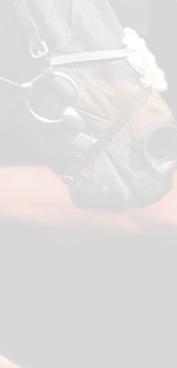
Fellowes fondly remembers a series of valiant but ultimately futile attempts to win the Melbourne Cup with Prince of Arran

THE PRINCE WHO WOULD NEVER BE KING
IREMEMBER THE LORRY rolling up, and out stepped two stunning colts. The first, despite his good looks, turned out to be unsound and not straightforward to train. The other was Prince of Arran. I held him in high regard from the start. On reflection, that was largely based around his looks. He was quite frustrating, in truth, though. He managed to keep finding ways to lose races. It took a while for the penny to drop, but I eventually put some headgear on him. He duly went and won.



His three-year-old season was similar; I felt he wasn’t putting 110 per cent into his races. We eventually decided to geld him, and from then on in he just improved and improved. Once he showed us what he could do, there was only really one target in mind. His owners love the Carnival. From day one, the remit had always been that if we have one good enough, we’d head out to Melbourne (and not just once).
For our first try in 2018, we went to Australia without a guaranteed entry. This was a massive risk. He had to win a race to earn his place in the Melbourne Cup. For a horse that didn’t get his nose in front that often, it was a big ask. We headed to Caulfield for a crack at the Herbert Power, but on the day he got trapped on a rail and finished an unlucky third.
With time against us, we had to run him again just three days before the Melbourne Cup. Off we went to Flemington on Derby day, knowing that any chance of him running in the Cup rested on him winning this race. Second place would get us nowhere. Thankfully, he ran an astonishing race. It was phenomenal – to this day, my favourite moment in racing.
The next 48 hours were a whirlwind. We arrived at the track that morning and it was chucking it down. He hated soft ground, but that wasn’t the only troubling development: we got our draw and found ourselves practically in the car park. We were pretty deflated. All the hard work to get him into the race, and the odds felt stacked against us.
Fortunately, Melbourne dries up very quickly. Coming into the straight he looked like he was going to nick it, but he just got passed and ended up third. What a brave horse. What a day. After that, the plan was always to head back to Australia and have another go. It’s a specialist race and we knew we had to give him another chance.
Again, his form at home was a little underwhelming. But as time passed we were beginning to learn a lot about him. I gave him a midsummer break and he had a prep run in England where he ran well enough to put him back on that longhaul flight. We headed to Australia in good heart, but we still had the small matter of needing to win another race to book our spot in the field. Thankfully he won first time around, in the Geelong Cup. The big day itself was a strange mix of emotions. It was the closest he got to winning the race, but the
least excited I felt. At no stage did I think he was going to win; even up the straight I didn’t think it would happen.




What you don’t see from the side-on angle is that one of the other horses veered off a true line, taking out another horse and nearly handing us the race. But truthfully, he wasn’t the best horse in that race that day. In the stewards’ room, he was promoted to second spot after the runner-up was disqualified. Third time lucky, I thought. It seemed written in the stars. Sadly, the 2020 race would become my biggest regret in racing. Not only were we not able be there in person, due to Covid, but we also had the best horse in the race. I challenge anyone to disagree with me on that. He got stuck in a pocket at the wrong time and couldn’t get out. He was absolutely flying at the line, but it all came too late.
I don’t know if that will be the last chance I get to win a Melbourne Cup – I hope not. But it’s not often you have the best horse in the race at that level. To come away without winning was pretty gutting. But time is a great healer. I look back on his career now with immense pride. To take him there three years in a row and have him absolutely spot on in time for the race is a big achievement. It’ll take something huge to top that in the future.

It’s a race I still think about every day. I’m constantly wondering who my next Melbourne hero could be. It’s a wonderful occasion – the Australians love their racing; Flemington is a phenomenal track, and it is a race that I would love to win.
That said, I may just have one in the pipeline for this year. Grand Alliance, who won the Group 3 John Porter at Newbury, is pretty much perfect for the race. He likes a big field and Australian racing suits quirky horses. The two miles round Flemington could be just his poison. Watch this space! n

10
Charlie Fellowes is a Fitzdares Ambassador and multiple Royal Ascot-winning trainer.
Prince Of Arran in Melbourne

















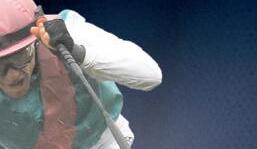




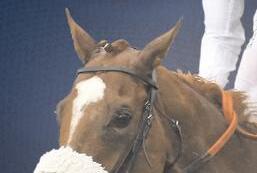

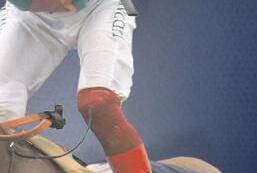

























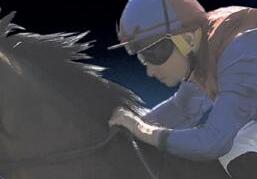






















Cla Eur assic/Grou s Prem rope’s innup1Wi mier sourc ners ce of up 1 W winner of WHURST , DE . 1 r S, G A INE f U 2000 G CHAL purchased a . tc , e . 1 r S, G AKE T ST AN LDE t TAT winner of T:+ purchased IRISHC Gr.1, , SGOLDCU ALL TERS P LUXEM erste+441638665931sales@tat S ALL TERS TAT at Y FUTURIT Gr.1, AKES,CHAMPIONST OURG MB com ersallste ta comwww salls t tc , e .1 HY, Gr , YTROP m
GREEN SHOOTS OF RECOVERY
FROM THE PERSPECTIVE of the casual British viewer, most high-profile tennis is played on grass. It is the only incarnation of the sport that a large portion of the population has ever watched. Because, for two weeks of every year of our lives, grass-court tennis has arrived uninvited on our TV screens, disrupting and consuming our precious viewing schedules. Andy Murray has silenced Jeremy Paxman; Martina Navratilova has erased Tony Hart; Pete Sampras has pulled the plug on Top of the Pops.
Now, in the age of the iPlayer, this is less of an inconvenience. And, mercifully, Wimbledon remains one of the few major sporting occasions that can be enjoyed without having to pay a further subscription fee. But this is a skewed perspective of tennis as a whole. Because grass-court action represents only a fleeting deviation from the main highway of the tour, a window of just a few short weeks. In 2022, only 11.7 per cent of all elite tennis matches took place on the green stuff; 60.1 per cent was played on hard courts, 28.2 per cent on clay. And this isn’t a recent development. Thirty years ago the percentage was 8.4. In 1985, when a 17year old Boris Becker muscled his way into the national consciousness, the grass-court variant still only occupied
15 per cent of all tennis. Back then, a larger chunk of the game was played on carpet – a far from ideal surface for a young German to be attempting diving volleys.
Nevertheless, despite the brevity of the season, Wimbledon has managed to maintain its elevated standing in global sport. And its uniqueness – of playing surface, of style, of tradition – has played a significant role in keeping it there. But what does the future hold? What do we see when we peer into this year’s beloved bijou grass window? Because it cannot be denied that an epic, Dostoevsky-sized volume of the game is coming to a close.

Though many will have held on to a flickering candle of hope of seeing Roger Federer perform one more competitive, balletic, one-handed backhand on Centre Court, his retirement last September snuffed it out once and for all. Serena Williams called time on her garlanded career in the same month. And with Rafael Nadal taking an extended break due to persistent injuries, I think we all need to take a moment, wipe away our tears, and force ourselves to look ahead.
From where I sit, my view is that, on the court, the future of both tennis divisions is very bright. The ATP and WTA both possess young, talented triumvirates capable of spearheading
the game and providing thrilling, competitive, aesthetic racquet craft for years to come.
On the men’s side the new big three are Carlos Alcaraz (20), Jannik Sinner (21) and Holger Rune (20). Alcaraz and Sinner have already competed in two outstanding Grand Slam matches stuffed with crowd-wowing, shotmaking and a pleasing dearth of salty histrionics. Rune, however, while capable of producing the positive qualities listed above, also has a curious knack for creating enemies on the court. It could be his opponent, the umpire, the crowd – or a heady combination of all three. And while such antics may not be to everyone’s taste, it can’t be denied that it makes for a compelling spectacle.
There was a period in the women’s game where any player arriving at a Grand Slam in decent form had a good chance of winning it outright. But some much-needed stability has been established in recent months, and there are now three names you expect to see at the business end of all major events. This triumvirate consists of Iga Świątek (22), Aryna Sabalenka (25) and Elena Rybakina (23). In 2023 Rybakina has finally begun to transpose her power and ability on to all surfaces, and should arrive at Wimbledon as the favourite to retain last year’s surprise crown.
So that’s all good, then? The future of tennis is safe and the sport will progress smoothly beyond the era of giants? Well, there’s just one little snag: all the names I have just listed are European. And this could have an effect off the court. With Naomi Osaka on hiatus there is no one representing Japan at the top of the women’s game. Ash Barty’s retirement has removed Australia’s seat from the top table too. And, most damagingly, where are all the gosh-darned Americans?
It is a question that can be asked of both halves of the game. A successful global sport really needs interest from the huge American market. And the huge American market is only really interested in successful Americans. The last American man to win a Grand Slam was Andy Roddick, 20 long years ago. And is there a force on the female side ready to step into the dominant shoes of Serena?
So while Wimbledon may show British audiences a narrow glimpse of a global tennis, could there be a danger that global tennis itself is shrinking, becoming a narrower, strictly European pursuit? A welcoming, verdant, grass window of opportunity awaits; but is anyone from outside the continent ready to take advantage of it?
12
n
Joe Hodgson is a regular contributor to The Fitzdares Times in print and online.
I think we all need to take a moment, wipe away our tears, and force ourselves to look ahead.
20-year-old Carlos Alcaraz is the future of men’s tennis.
This year’s Wimbledon may be missing many modern legends but a new grass menagerie has shot up. There’s just one problem, says Joe Hodgson


Brendon McCullum’s impact on England and Test cricket as a whole over the past 12 months can’t be
IN BAZ WE TRUST
INORMALLY TAKE A considered view on the result of the Ashes, primarily for the purpose of a punt on the outcome of the series, but not this summer. This summer I simply want England to win.

As a fan of the West Indies since birth, I have always been impartial enough when it came to assessing the relative merits of England and Australia and did so without sentiment. But this year there is something bigger at stake than making a few quid on the correct result.
A relentless monsoon of shortformat cricket continues to flood the international calendar, and as a die-hard fan of Test cricket I find it both frustrating and depressing that the most enthralling form of the game is being sidelined more and more each year. Perhaps it is inevitable that Test cricket will one day be consigned to history, but while Brendon McCullum is at the helm of this England team, there is still hope.
It may be a tough burden to bear, but the responsibility for a brighter future for the longest version of the great game seemingly rests on the shoulders of McCullum, Ben Stokes and their men as they prepare for the toughest challenge they have faced since the former New Zealand captain took charge of England in May 2022.

Since then England have played 16 Tests, home and away, winning 11, losing four, with the other match drawn, and have
compiled that terrific record with a brand of cricket that has been unlike anything we have seen. It is worth remembering that prior to the start of the Baz and Ben bromance, England’s previous 17 Tests had yielded just one win.
‘Bazball’, as coined by Cricinfo’s Andrew Miller, has revitalised interest in Test cricket once again, with McCullum encouraging his players to ‘rediscover the joy of playing sport that they had when growing up’, and it appears that every player in the dressing room is fully invested in his philosophy.
Reading that last paragraph again, it is conceivable that I have copied and pasted the script of Ted Lasso, or perhaps from the cheesiest of cheesy Hollywood hero sports stories. Yet, the reality is McCullum’s England have repeatedly produced feats during the past year that have stunned the watching world and left us wanting more, all with a carefree abandon that is inspiring to watch.
In just his second match in charge, England faced his old team, New Zealand, at Lord’s, but Bazball gave Jonny Bairstow the freedom to bash 136 runs off 92 balls and chase down a last-day target of 299 in just 50 overs.
On the first day of the Rawalpindi Test against Pakistan, Zak Crawley, Ben Duckett, Ollie
Pope and Harry Brook smashed a scarcely believable 506 for 4 in 75 overs. Against India at Edgbaston, England watched Rishabh Pant cart their bowling for 146 runs in 111 balls and conceded a 132-run first-innings lead, but produced a blistering chase of 378 in 76 overs to win against all the odds. Well, that was the old definition of against the odds, because this team have changed how those odds are now calculated.
The list of incredible feats McCullum’s men have produced have made it crystal clear that anyone playing a Test match for England now walks on to the field of play believing they can win any match from any position, no matter how desperate or unlikely it may seem. And pivotal to their success is that they take on those challenges without fear of failure.
The congruence of McCullum’s approach is that it appears to be deep within his DNA and one that he has cultivated his entire life. One of his rugby coaches at college, Darryl Paterson, told The Guardian’s Ali Martin: “He had incredible selfbelief. He would take risks. Some days they came off, some days they didn’t, but that was fine.”
Fast forward to the spring of 2022 and these were the observations of England’s strategic adviser, Sir Andrew Strauss, after
McCullum’s interview for the role as coach of the Test team: “He’s got such clarity of thought and approach. He used to run down the wicket to the fastest bowlers; he always took the positive option. He wasn’t afraid of failing; he isn’t scared of making mistakes.”
Ahead of the series against Pakistan late last year, McCullum told the assembled media: “We’ll certainly be pushing for results, it’s our obligation to ensure that people walk away entertained. If we get outplayed, that’s OK.”
AND THE MAN WHO scored New Zealand’s only triple hundred in Test cricket is acutely aware of the importance of his and England’s role in rescuing the longest version of the game from obscurity. “Test cricket is on a downward trend but Test cricket is my real love. If anyone is able to reinvigorate Test cricket and make it popular again, then it’s England. If you can be at the forefront of that by playing an
attractive brand of cricket with a smile on your face and try to entertain, then Test cricket has a chance.” Even as a proud West Indian supporter, hearing those words from McCullum and observing what England have done this past year, I can honestly say I haven’t felt more inspired by a cricketer since Brian Charles Lara pulled Chris Lewis to the boundary to break Sir Garfield Sobers’ Test record in 1994.
Approaching any Ashes series, there is always a great deal of speculation about the composition of the teams ahead of the summer, but it appears more of a concern for Australian supporters than it is for England’s. It doesn’t seem to matter who plays for England. Yes, there are niggles bothering 40-year-old Jimmy Anderson – plus ça change. Ollie Robinson has also been an injury worry and there have been rumblings of discontent about the returning Bairstow replacing Ben Foakes behind the stumps. To counter those issues, fast bowler
14
‘If anyone is able to reinvigorate Test cricket and make it popular again, then it’s England.’
overstated – but as the Ashes begin, Rishi Persad is determined to try…
FIXTURE DATES
1st Test Edgbaston
Fri 16 – Tue 20 June
2nd Test Lord’s
Wed 28 June – Sun 2 July
3rd Test Headingley
Thu 6 – Mon 10 July
4th Test Old Trafford
Wed 19 – Sun 23 July
5th Test The Oval
Thu 27 – Mon 31 July
Mark Wood is available again and Worcestershire’s Josh Tongue has been added to the mix.
The Aussies have injury worries of their own. One of their premier fast bowlers, Josh Hazlewood, has been plagued by a side strain for the past few years and the same niggle brought a premature end to his 2023 IPL stint.

No one underestimates how good the best players in this Australian side are. Captain Pat Cummins is a terrific leader and bowler; Steve Smith is still in the
argument for the best batsman in the world; and there are one or two young stars such as allrounder Cameron Green to enjoy. But the support cast for those Baggy Green stars possesses no fear factor.
David Warner has scored just one century in his last 32 Test innings, while his opening partner Usman Khawaja has a Test average under 20 in England. And if Hazlewood does succumb to injury, there are no back-up pace bowlers that English batsmen need to worry about.
Above all else, I think England will win the Ashes because Australia cannot play like England. No other team can play like England, because no other team is lucky enough to have Brendon McCullum in charge.
Maybe I have gone over the top in my appreciation for what McCullum has done for England and for Test cricket. But he has dragged the game I love back from the brink with a refreshing simplicity of style that I would have yearned to replicate if I still

played cricket today. I hope youngsters the world over will watch this Ashes series and be inspired to play cricket the way this England Test team plays, and it secures the future of the sport’s version that is most under threat.
And if all the virtues of McCullum, Stokes, Bazball and England’s Test team do not get you cheering for them, then remember that McCullum is also a huge horse racing fan. On England’s tour of New Zealand last winter, McCullum cancelled a
scheduled practice match to take the team to watch his horse, Defibrillate, run and win the Group 1 Zabeel Classic at Pukekohe racecourse. The geegees and cricket. How can you not cheer for him?
So yes, I want England to win the Ashes, but most importantly I want Bazball to win and Test cricket to thrive. I believe in Brendon McCullum. n
15
Rishi Persad has presented Channel 4’s cricket coverage
Jonny Bairstow epitomises England’s attacking brand of cricket

NATURE’S RARE JEWELS
IT ’ S MAY 2016 AT ST JAKOB PARK in Basel.
The final whistle of the Europa League final is moments away. Not only have Jürgen Klopp’s Liverpool been outplayed by Unai Emery’s Sevilla, a side bursting with energy and power, but the travelling Kop have been comprehensively out-sung by their Spanish counterparts.
It is Liverpool’s first European final since Athens in 2007 and the stadium is a sea of red scarves and banners, but for one corner. As the drizzle falls, that corner is the only part of the ground you hear. Chants of Sevilla, Sevilla, Sevilla echo off the tight terraces tumbling down on to the pitch.
Spain’s oldest club – their identity writ large in the lyrics of their anthem – offer constant reminders of who they are, why they are here and what they have come for.
“Y Sevilla, Sevilla, Sevilla, aquí estamos contigo, Sevilla, compartiendo la gloria en tu escudo, orgullo del fútbol de nuestra ciudad…”
These words reveal ‘El Himno’ to be no ordinary football song, but a proclamation of identity, unconditional love and pride.
“[A]qui estamos contigo Sevilla” (We stand with you Sevilla), “compartiendo la gloria en tu escudo” (sharing the glory) and “orgullo” (pride) of “nuestra ciudad” (our city).
The essence of an anthem is a tie that binds those off the pitch with those on it.
The Sevilla fans belting this out on a rainy night in Basel weren’t simply revelling in a third Europa League title in a row, they were heralding a city, a team, and a collective identity; a glorious sense of belonging.
Some teams have them, some wish they had them. What sets apart the anthem from the football song? And what is the difference between an anthem and a battle cry?
TRAGEDY
First things first: an anthem cannot only be about winning. Take for example Hala Madrid. Sung loud and proud on the terraces of the Santiago Bernabéu, it encapsulates everything that the collective football public dislike about Los Blancos.
“Hala Madrid y nada mas”. The message is unequivocal. Supporting Real is about nothing more than Real and nothing more
than winning. This brings me to my first principle. An anthem must be in some way self-deprecating. It has to acknowledge the peculiar vulnerability of unconditional support. Any other relationship that causes the extent of suffering that supporting a football team brings would be labelled abusive. But, like the twisted masochists we are, we keep crawling back, hoping to be treated better while fearing the worst.

Hibernian’s tearjerking Sunshine on Leith illustrates this with an opening verse of: “My heart was broken (repeated), sorrow, sorrow, sorrow, sorrow.”
The song exists on two levels. It was adopted as the Hibs anthem during the “Hands off Hibs” campaign in the Nineties as Wallace Mercer, owner of fierce rivals Hearts at the time, sought to take over the club. The Proclaimers took part in a rally at Edinburgh’s Usher Hall, and one of their songs that gained particular traction among those gathered in green that day was Sunshine on Leith. It became inextricably woven into the collective efforts to defeat Mercer. David vs Goliath: a battle that Hibs fans ultimately won.
The song confronts inevitable heartbreak, both at the possibility of losing
their team and of losing the match, yet the Hibs fans will continue to pour through the turnstiles of Easter Road and support. What message does that send to the players? Regardless of the result, come wind, rain, or shine, we will be with you.
An anthem can’t just be about winning, it must acknowledge failure; a good anthem is not without an air of tragedy.
IDENTITY
Another key facet in the emotional DNA of the anthem is identity. It must communicate a sense of place, both literally and figuratively for players and fans.

In June last year, as Wales beat Ukraine 1-0 courtesy of Gareth Bale, the Red Wall rapturously saluted its heroes. They had climbed the mountain and qualified for their first World Cup in 64 years. Moments later, fans and players joined in a rendition of Yma O Hyd
Written by Welsh language folksinger Dafydd Iwan, the lyrics are a journey through Welsh myth and legend stretching back to the epoch of Roman usurperturned-Welsh-dreamer Magnus Maximus. With a tangible sense of place established, Iwan’s genius becomes apparent. After
18
A team’s anthem can strengthen the bond between a club and its fans like nothing else, says Lola Katz Roberts
all that history, despite the bloodshed and toil, “yma o hyd”: we are still here. The message: we are present and alive, and what a journey it has been.
It is an intoxicating combination of elements. Indeed, it was precisely this heady mix of identity and suffering that propelled Wales all the way to Qatar, where they promptly exited in the group stages managing just a single goal, despite the indomitable efforts of Michael Sheen.
But perhaps their shortcomings in Qatar are telling. Pure emotion, Yma O Hyd, is not enough to sustain a World Cup campaign. However, the fact that Wales even made it there, a country with a population totalling 3.1 million, speaks to the anthem’s inspirational power.
HISTORY
Since Arsenal moved to the Emirates Stadium from Highbury in 2006, they have been searching for an anthem to consecrate their new home. The first one they tried –Elvis Presley’s The Wonder of You – was trotted out to a reception of general apathy. But why did it fail? “I guess I’ll never know the reason why/ You love me as you do/ That’s the wonder/ The wonder of you…”
THE TOP TEN
1. YOU’LL NEVER WALK ALONE
Spine-tingling – hard to pick an all-time version. Try 2019 after that Champions League semi-final victory over Barcelona.
2. SUNSHINE ON LEITH
Heart-breaking and stirring in equal measure. Scour YouTube for their postScottish Cup-winning effort in 2016.
3. HIMNO DEL CENTENARIO
Resonant and uplifting. Watch the Ramón Sánchez Pizjuán come to life with a vibrant rendition before Sevilla played Real last season.
4. I’M FOREVER BLOWING BUBBLES
It’s not easy being a West Ham fan, is it? This song aptly sums up the brilliant futility of supporting the Irons…
5. ON THE BALL, CITY
The oldest football song in circulation, harking back to the dim and distant 1800s. Wonderfully retro, yet relevant. See a 2019 version from Carrow Road before the ‘Old Farm’ derby.


On paper, these lyrics would appear to hit all the right marks. The ludicrous irrationality of placing your emotional wellbeing in the hands of 11 strangers. But it felt empty. Ripped from the bosom of Highbury with its magical marble halls, the Gunners desperately needed something that could speak to their history and make the Emirates feel like home. But The Wonder of You lacked authenticity. 50,000 North Londoners had little connection to Elvis or his words. If anything, despite Highbury lying just under half a mile from the Emirates, it only made the Arsenal fans feel further from home.
Now they are trialling something new. In early 2022, singer-songwriter Louis Dunford released the first song from his second EP, The Angel: North London Forever It is a plangent and nostalgic ode to the borough and its history, the verses taking the listener through the streets of Highbury: “North London forever/ Whatever the weather these streets are our own/ And my heart will leave you never/ My blood will forever run through the stone.”
And it has worked. After years of acrimony and bitter infighting, the Arsenal fanbase is finally united. Dunford has
delivered history to the Emirates, bringing together the fans and the team. Crucially, he has done so by locating his lyrics squarely within the identity of North London.
BEAUTY
It’s the Champions League final in 2019. Spurs face Liverpool at the Wanda Metropolitano in Madrid. Old foes José Mourinho and Arsène Wenger are sitting side by side in the studio as pundits for Be-IN Sports. There is the usual pre-match chatter, until suddenly a quiet gathers in the room.
Mourinho gestures for silence as the red and white scarves are hoisted and the Liverpool fans begin their rendition of You’ll Never Walk Alone. He comments: “This is more beautiful than we can say.”
Wenger adds “That’s unique.” Two men, who throughout their coaching days were the bitterest of rivals and who spent most of their careers trying to beat Liverpool, are united in admiration. And that is the art of the anthem. To stop you in your tracks and honour the wider context of football as a simulacrum for what it means to belong. n
6. THE FIELDS OF ATHENRY
What a song. In Euro 2012, with their team trailing and certain to be heading out of the tournament, the Irish fans responded with a rousing refrain of this epically tragic anthem.
7. YMA O HYD
A defiant anthem packed with historical resonance. Watch the Wales players join the Red Wall in an electric rendition last summer after World Cup qualification.
8. CANT DEL BARÇA
Set to a military rhythm, this is an invigorating reflection of the Blaugrana. Penned in Catalan, it has a powerful sense of purpose and place.
9. HIMNO DE BOCA
Boca Juniors fans are widely thought of as some of the world’s most passionate supporters. La Bombonera is an electrifying old ground whose foundations literally shake when Boca score.
10. HYMNS AND ARIAS
In the words of the great Tom Jones, “singing in South Wales is part of life”. This is a South Wales anthem to inspire the mighty Swansea City. Ar Hyd y Nos: all through the night.
19
Lola Katz Roberts is Assistant Editor of the Fitzdares Times.
Strength and conditioning coach Matt Little has worked with Sir Andy Murray through thrilling highs and painful lows. Henry Beesley asks him how a sporting legend is built – and then rebuilt

He’s famously been a ‘questioner’ of things over the years. He’s so analytical, drilling into every subject to the nth degree. If I give him a session, he’ll always want to know why: “Why today?” “How does it link to my tennis training at this moment?” “What’s the data behind it?” These are questions that other players don’t ask in as much detail.
What does a typical training day look like?
What are the differences between the main tour and during off season?
There’s a much greater emphasis on the physical side during the off-season. That’s where we get chances to make great strides from a physical standpoint. In peak season, you’re forever balancing the energy levels of competing and the amount of training required to keep the body going.
In terms of preparation to play, we take longer than ever these days. It can be anywhere up to two hours, including a physical warm-up, time with the physio etc.
searching moments in Miami, where he was just trying so hard to rehab. He was hitting with players and they were almost consoling him after practice sets, and that was really crushing to see. We were all working so hard to get him ready but it was just so clearly not going to work. That period was incredibly low.
In practice, you could see he was just so far off the pace. I remember in Australia in 2019, he hit with Rafa [Nadal] and Andy won’t even know this, but I went away on my own and was just in tears in a corridor in Melbourne Park. As someone who cares about Andy, not just as a tennis player but as a person, it was heart-breaking to have seen him be as great as he had been and then as a shadow of himself, through no fault of his own.
Do you think reaching world number one ultimately had a negative impact on Andy from an injury standpoint?
Take us back to the very beginning. How long have you been working with Andy, and how did it come about?
We’ve been working together for around 15 years now. We met when I was involved with his brother [Jamie], when he won the mixed doubles at Wimbledon with Jelena Jankovic. I built a rapport and a friendship with Andy during that time, and then, after he finished working with Brad Gilbert later that year, he decided to put a team in place around him. From there we formed the very first ‘ Team Murray’ way back in December 2007 and I’ve gone on to be the longest-serving member, aside from Kim and Judy, of course!
Was there a moment when you realised Andy was just ‘different’ from what you were used to working with? Give us an example.
I think the Gasquet match at Wimbledon in 2008. I don’t know if you remember that match… but you must recall that bicep pose! That was the realisation of a lot of the hard work we’d put in and was the start of a four- to five-year project to build his body in the way that we wanted to. That was the day I understood that not only were we working with an incredible tennis player, but also he could become a physical beast alongside all the attributes he already had.
Give us an insight into what Andy is like behind the scenes. What is it that sets him apart from other athletes you’ve worked with?
Andy’s always gained confidence from being physically fitter than his opponent, and that’s what’s motivated him to pretty much outwork anyone on the tour. The sheer volume of work that he does is phenomenal, but it’s the consistency of his work, both on and off the court, that really stands out. He’s never had a dip in motivation. If ever you asked him whether he wanted to do a session, the answer would and always will be ‘Yes’.
His willingness to consistently put in the hard yards in comparison to other tour pros that I’ve either worked with or been around has always really impressed me. That’s what really sets the greats apart, right? He’s just continually willing to do the uncomfortable things.
The tennis sessions are obviously extremely gruelling. During a development block, these can be up to three hours a day. Then there will be sessions where we’re analysing things, chatting about data, the commercial elements. Andy’s days don’t involve many gaps for just chilling out!

How much time would Andy spend on his mental game? How has this changed?
This has really fluctuated over the years. He uses a psychologist from the LTA, but to be fair, nowadays this is not something that I or the wider team get too involved in.
Previously, the entire team would interact with the psychologist to ensure that we were all on the same page with the right messaging, but as he’s matured as an athlete he’s interacted with the psychologist a little better. He’s able to implement what they’re asking him to do much better.
There’s no doubt, though, that it’s an incredibly important aspect and something that I think is underdone by a great deal of athletes out there.
Andy’s obviously had an incredible career. Can you identify one high point?
There have been so many highs. His first Wimbledon title immediately comes to mind. The magnitude of it was so much greater than any of us could have ever dreamt. Being in the inner sanctum of the team, we had no idea that the match was being shown on big screens in parks throughout the UK and all that other stuff, but the day itself went by so quickly. We barely even saw him afterwards. He had to get his suit fitted, do all his media work etc, and he sat at a separate table from us at the Champions Dinner. It was probably three days before we all sat down to have a celebratory dinner as a team.
When he won it again in 2016, we were determined that that wouldn’t happen again and that he actually was able to celebrate with those that mattered most. The second time was really enjoyable and a real highlight for me, personally. And how about a low point?
We were really in the doldrums there for the four years of his hip injury. The rehab was brutal, where you’re spending literally the entire week trying to get one more degree of extension out of a hip that just isn’t moving.
Before the Australian Open in 2019, we had some soul-

One hundred per cent. These things are always a culmination of factors, but the truth is Andy wasn’t healthy for a single week while he was world number one. There’s no doubt the 2016 season was brutal and really took a lot out of him. He turned up in Melbourne for the Australian Open with shingles, although we didn’t know it at the time. He was struggling with niggling problems throughout the clay season, before ultimately getting injured again against Wawrinka in the semis at Roland Garros.
2 017 was just one injury or illness after another, culminating in him hobbling off the court against Querry at Wimbledon. 2016 had a huge part to play in that, but it’s worth noting that anatomically there are other factors that influenced him. I guess it’s not ideal for the thing he has chosen to be good at!
The way that he’s trained and competed over the years also hasn’t helped. He’s someone who out-rallies and outworks people. His matches have always had those undulations to them where one minute he’s very much on top and then the next minute he looks dead and buried. Sometimes, therefore, his matches have gone on longer than they should have. Take Kokkinakis in Melbourne this year, for example. But because of his mind and his will to win he just keeps going. That does catch up with you eventually, though.
I’ve always felt that Andy is criminally underrated. Had he not been around at the same time as Novak, Roger and Rafa, how many slams could he have won?
Andy on his best day is as good as all those guys. You’d have to say they have an edge on him, given the number of slams they’ve got, but the margins are so fine. The biggest tragedy of all was that 2017 season. Andy was really in his prime then and coming off 2016 he was just unplayable. If he’d have continued that momentum into 2017, I’m certain he’d have added to his grand slam tally that year, and you just never know where that confidence could have taken him. That season is the one that really hurt as someone who was close to Andy, as he was really cut down in his prime.
What is left for Andy? Could he scale the mountain again? How many more times will we see him at Wimbledon?









20
It’s one of those ‘how long is a piece of string?’ questions. Even if he were to put a timeline on it, he’d probably keep going! His level of determination and his desire to keep playing is extraordinary. You have to imagine there can’t be too many more left, but I’ve learned throughout the years that you don’t write Andy off. But look – two Olympic golds, three slams, a Davis Cup, world number one and nearly every Masters title… he’s had an absolutely incredible career and will leave tennis as one of the all-time greats. n
TOP TIPS FOR AN ASPIRING YOUNG ATHLETE START EARLY




The sooner you start your journey from a physical standpoint, the better. That could be as young as aged 9 or 10 – but it’s important to be doing some work to give you stability and control over your body, particularly as you move through adolescence, where your body is more susceptible to injury.
CONTROL THE CONTROLLABLES
Your physicality is the one thing that you can control. The people who do the most work become the best at it… it makes my job easy! You can spend an hour practising your forehand and actually get worse, but I guarantee you if you spend an hour lifting weights, you will get stronger.


CONSISTENCY IS KEY
It’s the consistency of work over time, rather than individual pieces of brilliance in one-off sessions that will set you apart. You need to continuously be willing to put in the hard yards.
IT’S A LONG JOURNEY
You have more time than you think. I’m not expecting athletes to reach their physical peak before their early- to mid-20s, but along with that message, it’s the consistency of that work over the years that will have maximum impact.
21
Henry Beesley is The Fitzdares Times’ Editor.
THE ROYAL ‘WHEE!’
day out at Ascot was all it took to turn our own Sophie Manners into a racing fanatic…
again. But this time a lot had changed. I was older, a much better rider, and finally riding my own racing pony, Derwent Dream Dancer, also known as Dee-Dee. In the months leading up to the race, I had travelled up and down the country to compete in pony races. By that point I was well acquainted with the speed. Competing in the ‘Open’ class, I was lining up alongside many jockeys who have now gone on to achieve some incredible things.
This time we started at the back of the straight, which meant securing a position on the inside rail wasn’t crucial. As the horses approached the starting line, the flag dropped, and we were off.
WHEN YOU THINK of Ascot, what comes to mind? I assume most picture it as the epitome of prestige, where royalty come to grace the turf amid a sea of Pimm’s and Champagne. You’d not be entirely wrong – my view would be similar if it weren’t for my very personal relationship with the track.
Like any child from the suburbs of London, horses were a rare sight when I grew up (I’m talking loo-roll-duringthe-pandemic levels of scarcity). Yet I always found a way to pursue my pony-shaped dreams. I persistently pestered my parents to let me join the local Pony Club, Park Lane Stables, an urban riding centre just 35 minutes from central London.
I’ll never forget the perplexed look on my mum’s face when I expressed my wish to ride. Fast forward six years, and after countless hours spent mucking out stables, I encountered my first genuine hurdle.
Before then, I had never truly found my niche in the sport. Many people enjoyed dressage, but riding around the school with stirrups longer than your torso wasn’t much fun. Some liked show jumping, but teaching me to see a stride was like trying to teach a nine-year-old algebra (despite my nerves of steel).
However, Ascot’s 2015 Champions Day changed everything. Thirty kids
in purple Pony Club jumpers piled into a minivan, ready to witness greatness on earth. My first time at Ascot is a bit of a blur, although I do vividly remember the countless flower beds scattered around the racecourse alongside the stunning racehorses, whose coats were shinier than my loaned Welsh pony’s had ever been.
After that special day out, it wasn’t just my legs that were burning after my exhausting turn on the stall equicizer. I had discovered my passion. I had caught the racing bug. That evening, I went home and insisted to


my dad that I HAD to try pony racing. And thus began my everlasting love. Preparation for my first pony race was challenging. We endured numerous training days where we stood out like a sore thumb. I was the only mixed-race child, showing up with a startled pony and a trailer light that had been smashed out because my dad had never used a trailer before. As the day drew closer, nerves began to set in. I spent the last few weeks dieting, running and sitting in a makeshift sauna (a steamy bathtub) in an effort to lose that stubborn 0.5lb.
On my return to Ascot I was scheduled to ride Trigger, a grey Connemara who was supposed to be the fastest horse at the yard. Before I knew it I was trotting up to the post on a horse I had never ridden before, with only a boiled egg I had eaten in the morning to fuel me. The flag dropped, the horses ran, and Trigger led the field with me clinging desperately on to my ‘oh shit’ strap. It was the first time I had ever gone that fast on a horse, and I absolutely loved it.
The six-furlong race flew by in the blink of an eye, but sadly Trigger fell away in the final furlong. Perhaps I was enjoying the experience too much to realise it was a competition. Finishing a humble sixth out of 12 left me yearning for more. One year later, I found myself returning to Ascot
Queen Anne was right about Ascot: it is one of the few racetracks where horses can fully stretch their legs and gallop at full speed. I positioned myself on the outside rail and allowed my pony to do her job. She would almost always deliver. However, perhaps naivety got the better of me this time, because I was only one furlong away before I realised I had to start pushing. I gathered up my reins, compacting myself as much as possible for maximum efficiency. With a kick and a growl, I urged my pony on. Her ears flicked as she acknowledged the command.
For the first time in a while, I felt Dee shifting beneath me. Her pace accelerated significantly, and a smile spread across my face. I distinctly remember my dad screaming: ‘Get third, Sophie, get third!’ in the distance. He was always my biggest supporter in these races. I narrowly missed out on third place, losing by a nose – something I still regret to this day. Even though I didn’t achieve the results I had craved, three exhilarating days took place on that hallowed turf, and those memories stay with me for ever. After Ascot, Dee and I went on to win eight pony races, including the 148 P2P Pony Racing Championships at Garthorpe.
The three years I spent pony racing allowed me to meet extraordinary people, helped me grow as a teenager, and instilled in me a passion to pursue racing. I may not know much about parenting, but I firmly believe that allowing your children to follow their dreams, no matter how audacious they may seem, is crucial. I am eternally grateful for the opportunities I had, and I hope many others can do the same, regardless of their background.
Sophie Manners is Fitzdares’ Social Media Executive.
22
n
Before I knew it, I was trotting up to the post on a horse I had never ridden before, with only a boiled egg to fuel me.
One
Sophie on board her pony, Trigger, at Ascot
For five days in June, Ascot becomes awash with vibrant hues that mirror the joys of British summertime. Stylist Sarah Kate Byrne delves into what she believes makes a


ITHINK IT’S QUITE DIFFICULT to stand out at Ascot, as there are tens of thousands of people all donning their finest. You can stand out for the wrong reasons, and the right ones! Some are very daring and go crazy with their millinery. When I was judging fashion commentary, I looked for a silhouette where the hat worked with the outfit, and it’s the same as with men. If the top hat suits the gentleman’s face, the whole outfit ties together. Personally, I like a polished and thought-out look, so if you have the budget, a beautifully made piece of millinery or a very strong colour tends to work. My clients tend to be working professionals, mostly racing pundits, so a chic, professional and comfortable outfit is key.
I have always favoured big brims. The ‘seeping down effect’ looks wonderful and even gives the wearer some shielding from the sun. I also think the small, niggly bits are the parts that people forget – for example, the hair. A day-old hair that contains natural oils can help mould your style.
The Princess of Wales has recently been seen wearing big hats and I suppose people will try to emulate her chic look. I wouldn’t say I’m a trend follower per se, but I think a lot of big brims will be seen at Ascot this year. We are finally coming away from the ‘beret-shaped’ and ‘pillbox hats’ era and I’m not fussed about it.


I always suggest a chunky block heel or something thicker –someone in a thin, stiletto-type heel charging around on grass verges can be a disaster! My absolute top tip for anyone coming to Ascot, for both men and women, is to talcum powder your feet beforehand – this prevents blisters, and nobody wants to deal with that! Bringing some Compeed in your handbag could also save your feet a lot of unnecessary pain.
I do think Ascot is already very progressive. There is a misconception that the dress code isn’t very lenient, but I think it is. Ascot has come a long way in the last few years. Only in 2017 were

women allowed to wear jumpsuits in the Royal Enclosure, and I think that’s a huge step forward in the right direction. I personally think a women’s suit can be even more stylish than an ill-fitted dress. I also agree in principle that the strap of a dress needs to be one-inch minimum; however, a one-shoulder dress can look just as elegant. Maybe even more so than a heaving bosom.
People shouldn’t be ashamed to wear the same thing again! I stand by the saying, “if you are tired of something, lend it to a friend and take something in return”. I’m also a big advocate of hat rental. As we all know, millinery is an art but can also come at a price. There are some brilliant small, women-owned businesses out there that lend out anything from a normal piece to a standout piece. Cotswolds Hat Club is just one excellent example – you even get a membership if you have multiple events a year. It’s absolutely brilliant. n
23
Sarah Kate Byrne is the fashion stylist for ITV Racing.
royal ensemble simply just work…
In the chill of February, we celebrated our partnership with FULHAM FC in a typically eccentric way – with tea! As a service-mad bookie, we felt that everyone should be entitled to two lumps of sugar and a dash of milk. Fulham won the game 2-0 in front of a highly-caffeinated Craven Cottage.
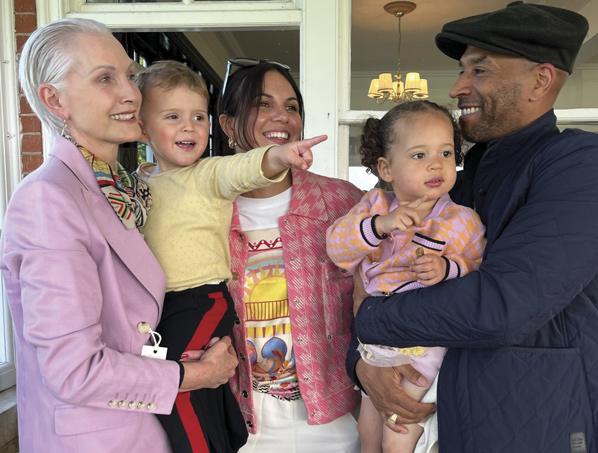




We spent the winter months giving the Churchill Box at WINDSOR a Fitzdares Club makeover so that it was absolutely perfect for our return in April. We are looking forward to returning every Monday night this summer.



24





25
The Fitzdares Club opened at Prestbury Park for the second year running at the CHELTENHAM FESTIVAL. Nearly 500 members passed through the pop-up, while some enjoyed our signature ‘Black Velvet’ – the world’s most expensive pint! Meanwhile, the Fitzdares Castle (above) lowered the drawbridge to a cabal of Cheltenham fiends on the eve of the Festival.
Our very own pawn stars George & Charlie eye up the King ahead of a seminal Royal Ascot
We headed down to Newmarket for a photo shoot at the historic Bedford House Stables with a single goal in mind: to recreate an iconic image between two GOATs, our very own Ambassadors George Scott & Charlie Fellowes.

What followed were lessons in greatness, elite equine training and friendly rivalry. Watch this space for our behind-the-scenes film of the day. We wish George and Charlie all the best at Royal Ascot. Fingers crossed we’ll see them in the winner’s enclosure!

26
SUMMERREAD
Ben Goldsmith’s memoir is a searingly blunt account of how he searched for redemption after his teenage daughter’s death
God Is an Octopus is not a sad book, and for a memoir that begins with the harrowing narration of his daughter’s death, this is a remarkable achievement.

The book begins at a relentless pace, recounting in rapid fire the accident that ended his daughter’s life. As a reader, one is riveted in hypnotic horror by the raw tragedy of the event and Goldsmith’s vivid descriptions of his ensuing grief. After the shockwaves of the accident begin to recede, he begins what feels like an epic journey to find consolation – he must, as he puts it, “rediscover how to live”.
The account of his encounter with a spiritual medium in which he communicates with his late daughter is devastatingly poignant. But it serves an even more profound purpose, opening up a question that Goldsmith seeks to answer throughout the book: Is there more to life than meets the eye? Is there more to our world than what we can immediately perceive?
What follows are meditations on a variety of heavy subjects from religion to afterlife and the world around us. He opens himself to a “greater magic” and generously affords his reader time to explore these subjects alongside him. Through the clouds of grief, nature inches inexorably into focus. It is almost imperceptible at first, but present from the first pages of the book, when he recounts his daughter “unafraid” in “the blood red water” tenderly handling the carcass of a humpback whale.
It is present in the stunned and silent aftermath of the accident, when Goldsmith reverts to a routine of walking familiar paths and swimming in the pond at his family farm. As he searches for meaning in the inexplicable tragedy of his sudden loss, nature inevitably makes its presence known. He describes the moment he plunges into a pond and emerges feeling reborn: “I felt nature enveloping me, reassuring me, beneath a sun that shone hot even as it approached the conclusion of its long, daily descent westwards.”
There is a comfort that emerges in the cyclical inevitability of nature’s passage as he finds a “kind of music in the way… birds cross continents and oceans” in a “back and forth rhythm”. Following this living thread is what ultimately brings the book towards a sense of
redemption and even peace. There is comfort in the construction of a stone circle in memory of his daughter, and this “infinite, eternity” and “timelessness” begins to pick at the seam of life’s greater questions. Emerging from the relentless pangs of immediate loss, he reflects on the wider context of what it means to be alive and is unflinching and bold in his search for optimism.
woods around his home in Richmond nurturing birds and mice, to his present plans to rewild his family farm, suddenly the pages are brimming with new life, growth and hope. This growth infuses his own grief with hope as he imagines “nature reawakening in all its glory…an intricate tapestry perfectly infused” with his daughter’s “spirit”.
Goldsmith’s commitment to advocating for the natural world begins to drive the story forward, with detailed exploration of the environmental challenges facing the country. He concludes that by “spreading the word, hustling and haranguing”, he might “piece myself back together”. This conviction invigorates the rest of the story with every page, it seems, bearing new revelations about the past and future of the natural world.
From the sepia-toned stories of Goldsmith’s childhood rambling the
By the time he encounters his daughter while experimenting with ayahuasca – it feels as though the exhausting journey is reaching its conclusion – that realisation that he and his daughter were “alive together”, “stretching back through time”, is woven into the wider revelation of this epic memoir that ultimately finds joy in the most desperate circumstances.
Aside from his contemplation of these matters, Goldsmith’s careful portrayals of his family and friends reverberate with a love and warmth which assist in elevating the memoir to heights that did not seem possible given the depth of tragedy in its early chapters. This is a beautiful, haunting and tender book, essential reading for anyone on a journey of healing and discovery. n GOD IS AN OCTOPUS is published by Bloomsbury
THE CROSSWORD
ACROSS
DOWN
£100 free bet for the first correct submission to rory@fitzdares.com
8.
11.
13.
14.
17.
18.
19.
27
1. England’s 2nd highest wicket taker of all time (6, 5)
7. Serie A winners 22/23 (6)
9. A spy (5)
10. Rule (3)
12. In the roof (5)
13. Biggest football team in Sweden (5)
14. It paddles a boat (3)
15. Extreme pain (5)
16. Opponent (5)
18. To plant a seed (3)
20. Irish racecourse (5)
21. Specialist American Football position (6)
22. Fulham FC’s training ground (7, 4)
1. Swiss three-time Grand Slam winner (4, 8)
2. Illegal bowling action (5)
3. Home of Surrey CCC, The (4)
4. Type of sailing boat (4)
5 . Tied 15th in the US PGA, carded a hole-in-one (7, 5)
6. South Africa Rugby nickname (9)
São Paulo football team (9)
Cate Blanchett 2023 Oscar-nominated film (3)
Chester’s Boodles ___ Festival (3)
Richarlison’s number of Premier League goals 22/23 (3)
Japanese beef (5)
Fraud (4)
Ham and Brom (4)
This is a beautiful, haunting and tender book, essential reading for anyone on a journey of healing and discovery.
1 2 3 4 5 6 7 8 9 10 11 12 13 14 15 16 17 18 19 20 21 25 22
Wildlife (£20).

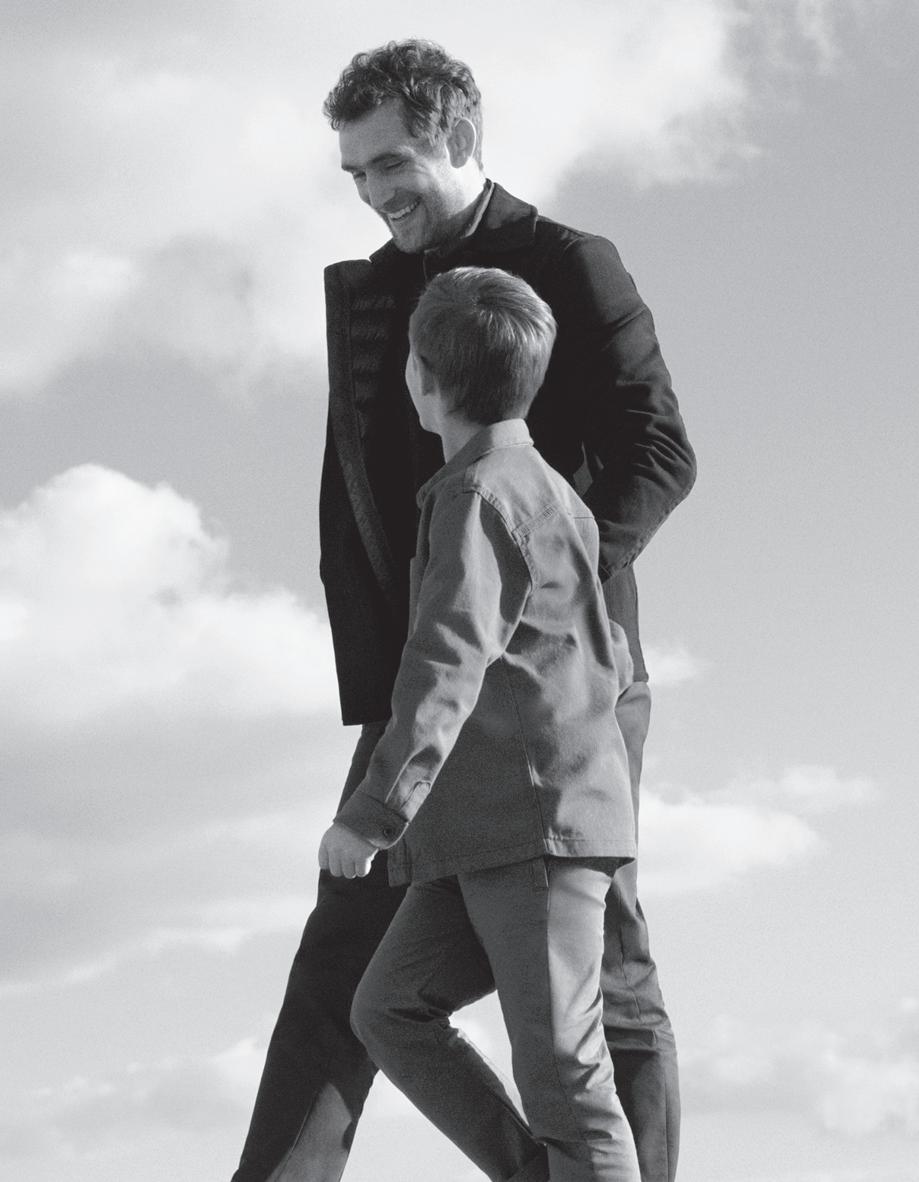
 BY RISHI PERSAD
BY RISHI PERSAD

 BY SARAH KATE BYRNE
BY SARAH KATE BYRNE



 CHARLIE FELLOWES
CHARLIE FELLOWES













































































































































